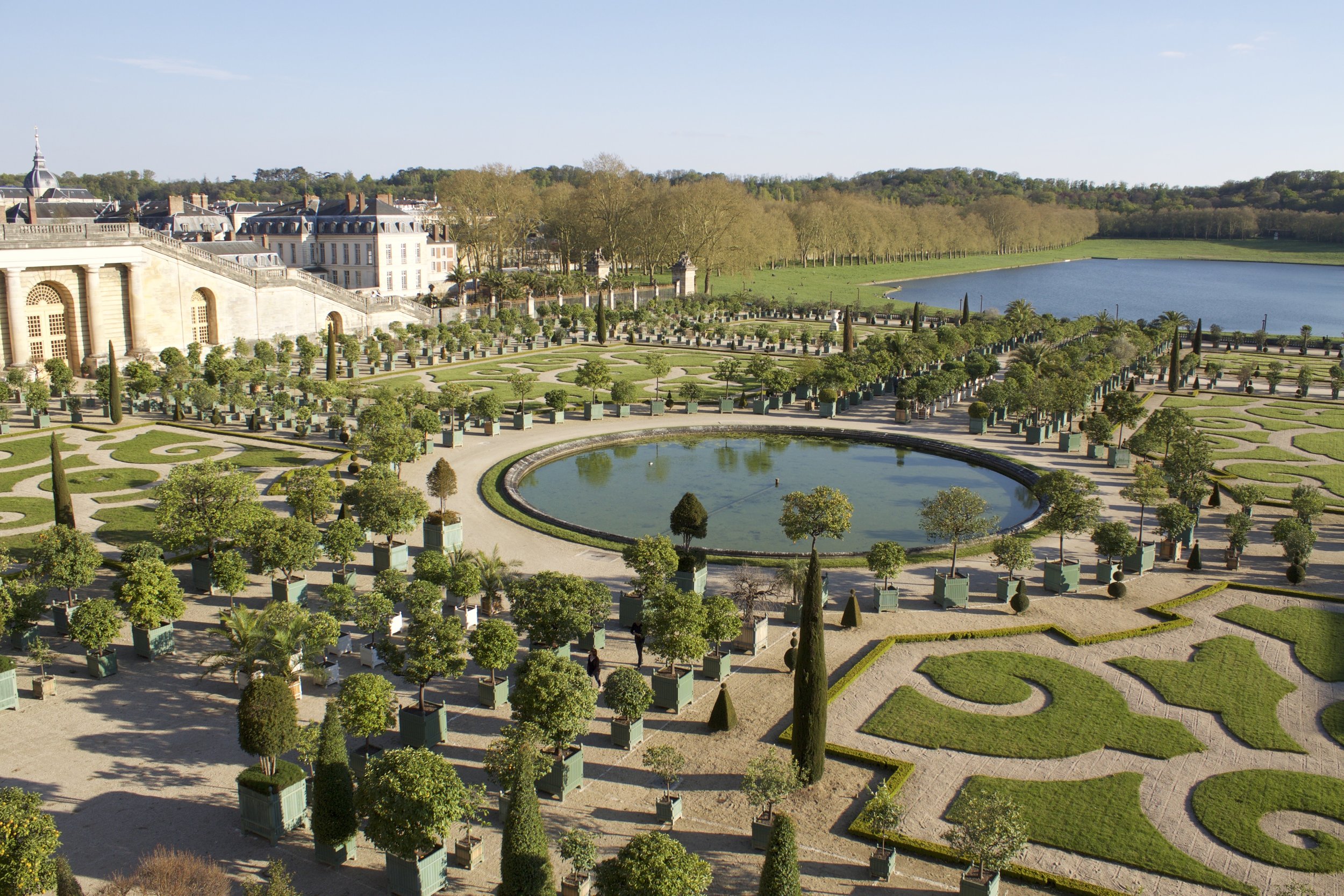
THE ORANGERY AT VERSAILLES
Versailles, France, 1663
In the mid-17th century, it was considered a great sign of wealth and status if a citizen could grow fruit trees all year round, especially orange trees. Oranges are citrus which brings the healing benefits of vitamin C, something people at the time desperately needed more of and Louis XIV was no exception.
In 1663, the Palace of Versailles was endowed with an orangery as one of the many expansions to its grounds. The orangery was originally built by French baroque architect Louis Le Vau. About 20 years after it was built, from 1683 to 1685, Jules Hardouin-Mansart doubled the width and length of the original orangery. The central gallery is now over 150 meters long while the barrel vaulted ceilings stand 13 meters high. The barrel vault ceiling along with the use of stereotomy, the art of arranging stones, gives the space a grand and palatial feel, while sticking to its Baroque influences. The renovations opened the orangery into a large space capable of storing more plants and more people.
The orangery structure has an ideal location facing southward and nestled below the South Parterre, shielding the space from the strong winds of the area. Thick walls also protect residents from the elements.
“The 4-5-metre thick walls, double windows and south facing position enable it to maintain a temperature in winter that is not lower than 5º C,” according to World Heritage.
![01_Cons_ch1_016[2C],gh1.jpg](https://images.squarespace-cdn.com/content/v1/5f11b7e4e3277041fd2580c6/62962647-6518-4ce1-a855-ab9069ee2d7d/01_Cons_ch1_016%5B2C%5D%2Cgh1.jpg)
![01_Cons_ch1_017[1B].jpg](https://images.squarespace-cdn.com/content/v1/5f11b7e4e3277041fd2580c6/1f1d080b-5ed8-46d7-b10f-6b2f75dae989/01_Cons_ch1_017%5B1B%5D.jpg)


The idea of an orangery was important because it was considered good manners for citizens calling upon the king to offer him their orange trees as a sign of flattery. Citrus was regarded as the healthy superfood of the time so it was reserved for royalty. Additionally, it was rare for non-royalty to have an orangery or similar space of their own. It was a status symbol of great importance if a citizen could grow their own produce at any time of year, regardless of the weather.
To stock the orangery, Louis XIV gathered all of his orange trees from his royal houses and also acquired many new trees from Italy, Spain and Portugal. He combined all of the trees into the large orangery and was eventually able to boast the largest collection in Europe. Today, the orangery features oleander, lemon, pomegranate, eugenia and palm trees.
In the winter, the trees are stored in the orangery. In the warmer months, trees are placed around the garden.
Today, the orangery is framed by the Hundred Step Staircase and the South Parterre, and across from the Swiss Lake. The cathedral-like orangery stands as the centerpiece of the garden. The Orangery parterre was adorned with several sculptures during Louis XIV’s reign, but now are housed in the Musée du Louvre. The surrounding garden consists of four grass areas and a circular pool. In the summer, there are about 1055 containers decorating the grounds with orange trees, Eugenia bushes and more.
Photo Credits: Andre Quinou / Shutterstock.com (Heading), Sergey Novikov | Shutterstock.com (Slider image 1), Caroline Richard Photography (Slider image 2)
